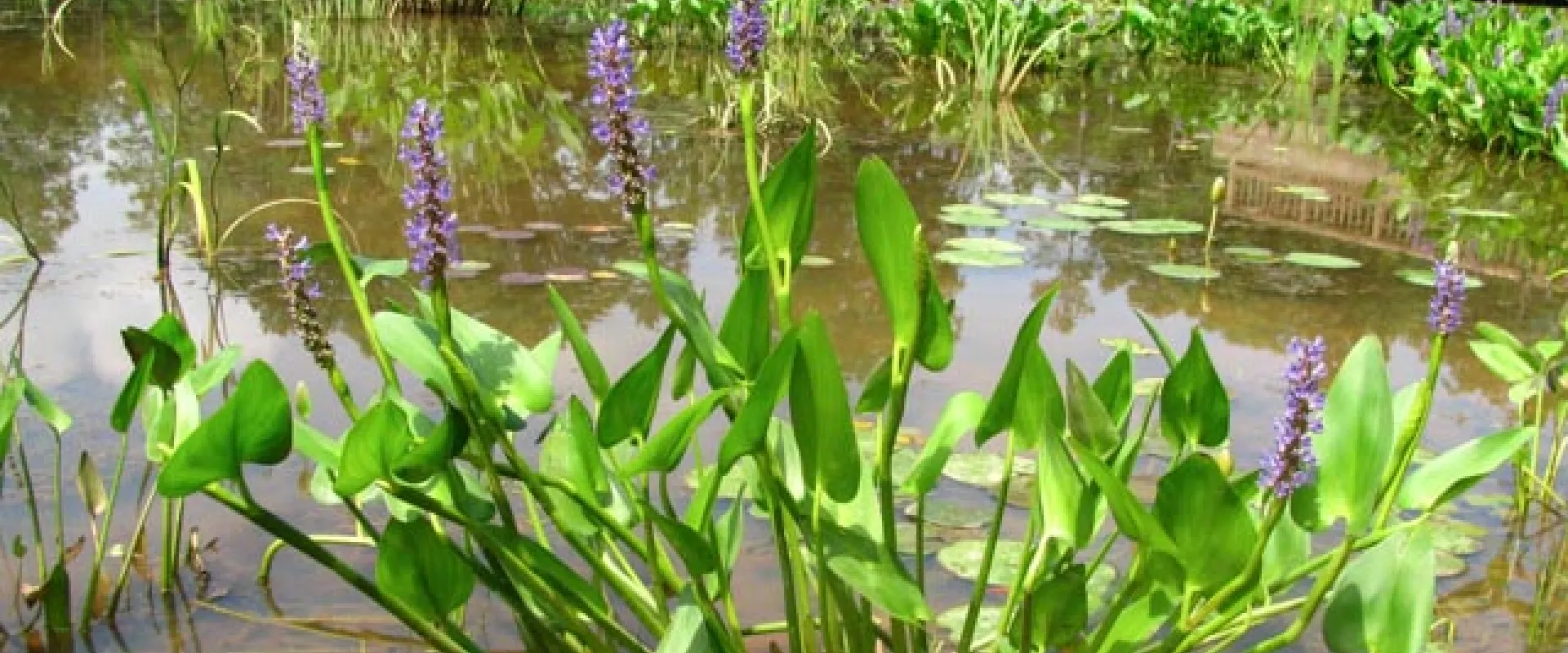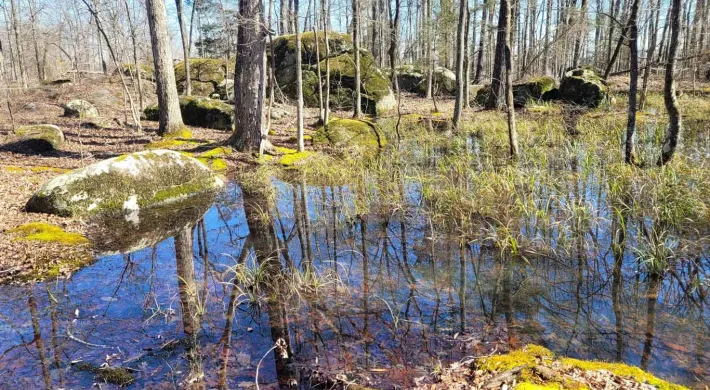To reduce surface water contamination in our North America Lake due to runoff from the adjacent parking area, the North Carolina Zoo created a new wetland adjacent to the Dragonfly Pointe picnic area. This green infrastructure project makes use of nature’s innate ability to neutralize harmful chemicals that find their way into the environment. Not only can the wetland filter a one-inch rain event every seven days, it also provides habitat for native species such as beavers, kingfishers, dragonflies, and bullfrogs.
Combatting Contamination of Our Water Sources
It might not be your car, but many cars parked at the Zoo (as anywhere else) have small leaks that spill oil, antifreeze, or brake fluid. Rain washes these automotive chemicals and other pollutants into nearby lakes and streams, from where it can harm aquatic insects, fish, amphibians, birds, and even humans. As one of the very few initiatives of its kind in North Carolina, the North Carolina Zoo's Environmental Management System has turned to green infrastructure to reduce surface water contamination from runoff on Zoo grounds.
A Free Service Provided by Nature
Nature has an innate ability to neutralize many harmful chemicals that find their way into the environment. One way that nature provides this free ecological service is through wetlands. Wetland plants slow the flow of water so heavier pollutants settle to the bottom where aquatic organisms break them down over time, rendering them harmless. Water-based chemicals are diluted so they do less harm as they flow downstream. Fungi and bacteria go to work on oil, breaking it down into harmless compounds before it washes into other waterways. Studies have shown that protection of these natural water purification systems can save taxpayers millions of dollars over the long term.
Harnessing Nature’s Purification Power
In 2004 the Zoo decided to construct a new wetland to take advantage of nature’s water purification systems. The aim of this wetland was to filter runoff originating from the Zoo’s busiest parking area at the North America entrance to the Zoo. Many partners assisted with planning, design, and construction of this $1 million, 1.5-acre project, which included testing for runoff contaminants, design and construction of the wetland itself, educational features explaining wetland benefits, and a picnic deck. The project was completed in June 2009.
Helping Us and Helping Nature
Today, our constructed wetland can filter a one-inch rain event every seven days. In addition to this water purification service, the wetland has become a home for a great number of native plant and animal species and an enjoyable natural vista from the Dragonfly Pointe picnic area. Some of the special bird species that visit the wetland are ospreys, herons, and kingfishers. Visitors may also spot dragonflies, snapping turtles, water snakes, and bullfrogs, even a few beavers that sometimes give groundskeepers a few headaches when they try to build a dam at the wetland’s spillway.
Partners: NC Clean Water Management Trust Fund, NC Department of Environmental Quality, NC Department of Transportation

